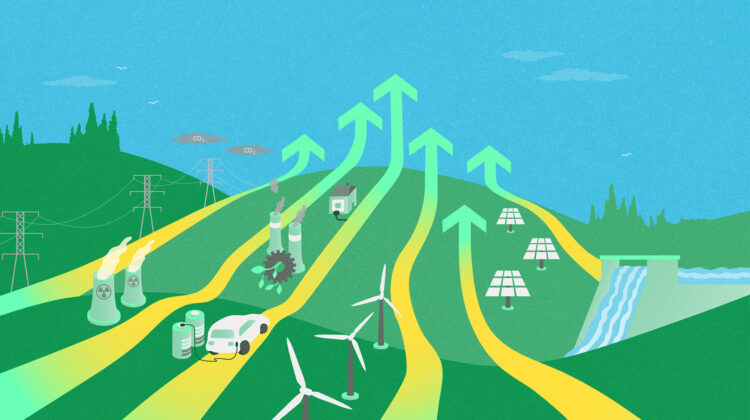
Alberta is exercising caution—and warning the rest of Canada to do the same—as the high-momentum region transitions tactically toward a clean-energy economy.
Under new leadership, the Province has launched a political campaign targeting the nation’s approach clean-tech.
Called “Tell the Feds,” the campaign under Premier Danielle Smith opposes Ottawa’s proposed electricity regulations, which they claim are too aggressive could make electricity unreliable and unaffordable for citizens already struggling with rising costs of living.
Smith’s campaign cites a $1.7 trillion expected cost to achieve a net zero grid by 2035—a fragile grid that she warns may leave our power system dependent on intermittent sources like solar and wind.
Many mistake this position for being anti-cleantech, but Smith strongly supports green energy solutions such as hydrogen-based technology.
The Premier’s stance is that Canada ought execute its energy grid transition over a longer period of time.
“Ottawa’s carbon-neutral goals can be achieved by 2050 with a lower tax and utility burden on Canadians,” the campaign posits. “Changing over our electricity system in 27 years is much more practical and affordable than rushing to do it in just 12 years.”
Smith points out that Alberta reduced electricity emissions by 53% from 2005 to 2021 and is already an active adopter of alternative energies like solar.
“We are already Canada’s wind and solar leader, and will add a lot of new generation by 2035—but wind and solar are intermittent sources,” the campaign reads. “With electricity demand set to soar by 2050, we need a diverse mix of generation options—intermittent and base-load—to prevent future blackouts and keep a reliable grid.”
According to Smith, Alberta is discussing with the federal government how to bring Ottawa’s efforts to decarbonize the economy in line with Alberta’s Emissions Reduction and Energy Development Plan.
If this alignment is not achieved, she says, Alberta will chart its own path to ensuring the province has a reliable and affordable electric power grid.
For now, Alberta’s aim is to cultivate the development of clean-tech innovation rather than implement current lacklustre solutions.
This will be accomplished, according to the Province, via high-efficiency natural gas base-load while “incentivizing innovative clean technologies like carbon capture, utilization, and storage-abated natural gas generation, small modular reactors, and hydrogen generation.”
The region of Alberta is home to a range of clean-tech innovators including Arolytics, Eavor, CleanO2 Carbon Capture Technologies, Future Fields, Innervision Wellbore Technologies, SolarSteam, and Summit Nanotech, as well as ecosystem-supporting organizations such as the Alberta Ministry of Agriculture and Irrigation, Emissions Reduction Alberta, Energy Futures Lab, Southern Alberta Institute of Technology, and Startup TNT.



I tend to agree with the premier here. We could add massive amounts of battery storage today, but it is still very expensive. Prices will come down, but it is going to take time.. Ontario added a bunch of wind generation when it was expensive to do so, while AB waited for prices to come down. BESS at this point is kind of like buying the first 40 inch Plasma plasma TV that was available for $10k, but by waiting 5 to 10 years, we can get that same TV for under $1k.